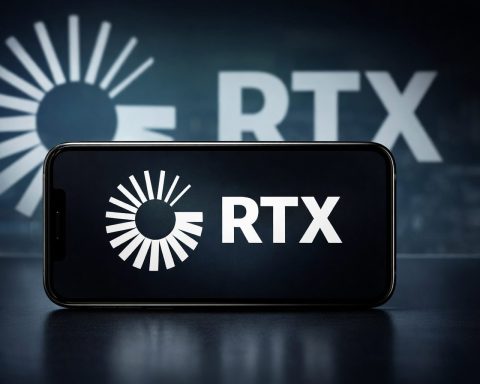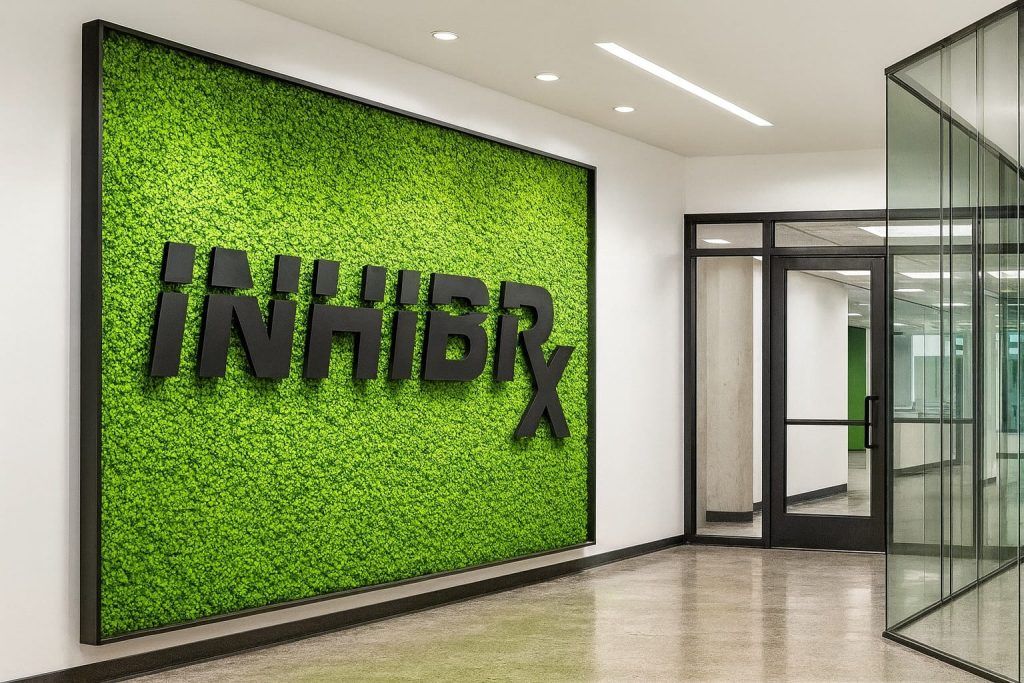October 24, 2025 – Denison Mines Corp. (NYSE American: DNN) has emerged as one of this year’s hottest mining stocks amid a global uranium frenzy. Below is a summary of key developments and what they mean for the company’s stock and the broader uranium sector:
- Stock Doubles on Nuclear Revival: DNN shares have more than doubled in 2025, recently hitting multi-year highs (~$3.35 intraday) as uranium prices surged [1] [2]. After some profit-taking, the stock hovered in the high-$2 range (~$2.65–$3.05) heading into late October [3] – still up over 100% year-to-date, vastly outperforming major indices [4].
- Flagship Project Nears Fruition: Denison’s Wheeler River uranium project in Canada achieved crucial provincial permitting approval this year and now awaits a final federal license decision by December 2025 [5]. The company aims to begin construction in early 2026 (pending approval) and is targeting first production around 2028, which would make Wheeler River’s Phoenix deposit the first in-situ recovery (ISR) uranium mine in Canada [6].
- Uranium Price at 14-Year High:Spot uranium recently climbed to ~$80–$83 per pound – the highest since 2011 [7] – fueled by a global “nuclear renaissance.” Over 30 countries (including the U.S., China, and India) plan to triple nuclear power capacity by 2050 [8], boosting long-term uranium demand. Meanwhile, supply remains tight (mine output ~130 Mlbs vs. ~180 Mlbs annual reactor demand [9]), due to factors like Kazakhstan cutting output 10% from 2026 and disruptions in Niger and Russia’s uranium industries [10] [11]. In the U.S., the government even invoked the Defense Production Act in October 2025 to bolster domestic uranium fuel supply [12].
- Analysts Bullish Despite Rally: All five brokerages covering Denison rate the stock a “Buy” or “Outperform” [13]. The consensus 12-month price target is about $2.75 [14] (slightly above current levels), but several analysts see far higher upside. For example, Desjardins Capital Markets recently reiterated a C$5.00 target (~US$3.65), arguing that Denison’s high-grade assets and imminent project permits justify a premium valuation [15]. Raymond James likewise boosted its target to C$4.35 in October [16].
- Key Milestones “De-Risk” the Story: After years with no active mines, Denison restarted uranium production in 2025. Its McClean Lake joint venture produced the company’s first yellowcake in 15 years [17] – a development CEO David Cates hailed as “a significant milestone” in returning to active mining [18]. Denison also unveiled stellar economics for its Midwest project (est. $11.70/lb operating cost, >80% IRR) [19], and discovered additional high-grade uranium at Wheeler River [20] – accomplishments Cates says “de-risk” the pipeline by moving Denison closer to producer status [21]. The company raised $345 million this year to fund growth [22], giving it ample liquidity, though full Wheeler construction will require additional financing [23].
- Uranium Hype and Peer Rally: Investor enthusiasm for uranium is running high. DNN’s trading volume and call option activity spiked in October (one mid-month day saw ~36,000 call contracts traded – ~3.5× the norm) [24], and institutions now hold about 36–37% of Denison’s float (up from ~25% a year ago) [25]. Across the sector, uranium equities have surged: industry leader Cameco (CCJ) recently hit multi-year highs around $83/share [26], NexGen Energy (NXE) traded near $9 [27], and U.S.-focused Energy Fuels (UUUU) jumped 23% in a single week in early October [28]. Caution: Despite the optimism, experts note DNN’s valuation already prices in a lot of good news – any uranium price pullback or project delay could spur volatility [29] [30].
Stock Surge Powered by Nuclear Revival
Denison’s stock price has been on a tear this year, reflecting both uranium market tailwinds and the company’s own progress. After languishing near $1 for much of last year, DNN began climbing in mid-2025 alongside uranium’s rebound [31]. The rally accelerated this fall: shares hit an intraday 52-week high of about $3.14 on October 13, closing at $3.05 that day on heavy volume [32]. Even after a recent pullback to the high-$2s, DNN is up over 100% year-to-date [33], vastly outpacing broader indexes and making it one of 2025’s top-performing mining stocks [34].
Such rapid gains have come with high volatility. It’s not uncommon for DNN to swing 10%+ within a single session on shifting sentiment [35]. For instance, during the week of Oct. 17, the stock whipsawed from about $3.09 down to $2.91 in one day amid market jitters before stabilizing [36]. Still, the overall momentum remains strongly positive – even after pulling back, Denison trades well above key moving averages (recently ~$2.45 50-day vs. ~$1.95 200-day) [37]. The company’s market capitalization now sits around $2.7 billion, a reflection of investors pricing in Denison’s future production potential (the firm remains unprofitable currently, with a negative P/E) [38].
Recent catalysts have contributed to the stock’s strength. In August, Denison announced a major regulatory approval for Wheeler River (more below), which sent shares higher. The broader nuclear sector rally has been another big driver – essentially lifting all uranium stocks. As one market observer noted, Denison’s 2025 rise “already prices in the good news” to a large extent [39]. The key question is whether the company can deliver the results needed to justify its surging valuation going forward.
Uranium Market Tailwinds and Geopolitical Boost
The uranium market in 2025 has flipped dramatically into bull mode, underpinning Denison’s rally. After a decade in the doldrums following Fukushima, uranium is now one of the year’s best-performing commodities [40]. Spot prices recently broke above $83 per pound – the highest level since 2011 [41]. (For perspective, uranium was barely ~$30 two years ago.) This price spike is driven by a structural supply-demand mismatch: global mine output (~130 million lbs U₃O₈ annually) falls far short of nuclear reactor requirements (~180 M lbs) [42]. The ~50 Mlb/year gap has been forcing utilities to draw down inventories and scramble for supply contracts, often at elevated prices [43]. By October, utilities had only secured an estimated 70–75% of their near-term uranium needs, prompting a frenzy of long-term contracting at premium prices [44].
Demand-side drivers are robust. A worldwide push for carbon-free energy and energy security has prompted what many call a “nuclear renaissance.” Over 30 countries plan to expand nuclear capacity threefold by 2050 as part of their climate strategies [45]. Even emerging factors like the energy-hungry AI boom are contributing – power demands from data centers (especially AI-driven centers) are projected to skyrocket, leading tech firms and governments to revisit nuclear power for reliable, clean baseload energy [46]. The International Atomic Energy Agency projects global nuclear capacity will jump ~26% by 2030, which implies a significant increase in uranium demand [47]. In the U.S., policy support for nuclear is growing: the Inflation Reduction Act’s credits are helping existing reactors, and in October 2025 the U.S. government invoked the Defense Production Act to boost domestic uranium fuel supply [48]. There’s also a $500 million federal initiative underway to develop high-assay low-enriched uranium fuel for next-gen reactors [49] – news that sparked jumps in uranium mining stocks globally.
On the supply side, constraints and geopolitics are exacerbating the uranium shortage. Kazakhstan – the world’s top uranium producer (~40% of supply) – announced plans to cut output ~10% starting in 2026 [50]. Niger, a major supplier to Europe, saw mining operations disrupted by political unrest [51]. And Western sanctions on Russia’s nuclear fuel industry (in response to the Ukraine conflict) have created uncertainty, since Russia handles a large share of uranium enrichment globally [52]. These factors have raised concerns about secure supply. Many Western utilities are now trying to diversify away from Russian uranium services, adding to demand for non-Russian suppliers. As a result of this tight market, geopolitical events have outsized impact – for example, news of unrest or policy shifts can send uranium prices and related stocks sharply higher.
Crucially, this environment greatly benefits junior uranium companies like Denison. When uranium was $30–$50/lb, many of their projects had marginal economics; at $80+ per lb, previously uneconomic deposits become highly attractive [53] [54]. Denison in particular offers “high leverage to uranium price increases,” analysts note, because each uptick in the commodity price significantly improves the projected value of its undeveloped resources [55]. In practical terms, a mine that might break even at $45/lb could generate robust profits at $80/lb. This leverage hasn’t been lost on investors – money has been flooding into uranium juniors on expectations that sustained high prices will turn companies like Denison into big winners [56]. Indeed, bullish forecasters are now flirting with $90–$100/lb uranium by year-end if current trends persist [57], which would likely propel all uranium stocks even higher.
Company Milestones: Wheeler River, McClean Lake and More
While macro trends lit the fuse under DNN stock, Denison’s own 2025 achievements have added fuel to the rally. This year marked a turning point as the company transitions from explorer to eventual producer. Some key developments include:
• Return to Production – After 15 years without output, Denison resumed uranium mining in July at its McClean Lake joint venture (22.5% Denison, with Orano) in northern Saskatchewan. Using an innovative SABRE borehole mining technique, the operation extracted ~250 tonnes of extremely high-grade ore (averaging >10% U₃O₈) from the McClean deposit [58]. The ore was processed at the McClean mill, yielding Denison’s first packaged uranium concentrate (“yellowcake”) since 2008 [59]. CEO David Cates called it “a significant milestone” for the company, heralding a return to active mining after a long hiatus [60]. The initial output is modest, but Denison will sell its share in coming quarters – marking its first revenue from uranium production in over 15 years [61].
• Wheeler River Permitting – Denison’s flagship Wheeler River project (95%-owned) moved one step away from full approval. In August, the Province of Saskatchewan issued Ministerial approval of Wheeler’s Environmental Assessment, clearing the major provincial hurdle [62]. Now the final federal sign-off is pending: the Canadian Nuclear Safety Commission (CNSC) held initial public licensing hearings in October, with a final session scheduled for Dec. 8–12, 2025 [63]. If, as expected, the CNSC grants a construction license after those hearings, Denison could break ground on Wheeler River in early 2026 [64]. This would formally kick off development of the Phoenix deposit at Wheeler – set to become the first in-situ recovery (ISR) uranium mine in Canada [65]. Notably, Phoenix boasts extraordinarily rich grades (ore zones averaging ~15–19% U₃O₈, many times the world average) and will use a low-cost ISR extraction method, a combination that promises very robust economics if executed successfully.
• Timeline to Production – Denison is eyeing first production from Wheeler River’s Phoenix deposit by ~2028 [66], assuming timely licensing and construction. That would transform the company’s profile, as Wheeler’s output (initially projected around ~6 million lbs U₃O₈ annually) would make Denison a mid-tier producer. Achieving this will require hitting interim milestones (final permits, then ~2–3 years of construction). The Phoenix ISR operation is being watched as a potential game-changer – it could demonstrate that in-situ mining of Athabasca Basin’s ultra-high-grade uranium is feasible, unlocking a new paradigm for Canadian uranium mining.
• Midwest Project Study – In October, Denison released a new Preliminary Economic Assessment (PEA) for its Midwest project (Denison 25% interest, with partners). The results were eye-catching: operating costs estimated at only ~$11.70 per pound U₃O₈ and an after-tax internal rate of return >80% (for Denison’s share) at uranium prices in the mid-$50s [67]. Even at $50/lb uranium, the project would be quite profitable, indicating that Midwest could remain viable even if market prices soften. Management highlighted this as “hidden value” in Denison’s portfolio [68] – an asset that is being undervalued by the market relative to its potential. While Wheeler River is the priority, Midwest (located near McClean Lake) could follow as another low-cost source of production in the future.
• Exploration & Expansion – Denison has continued to grow its resource base. The company drilled additional holes at Wheeler River’s Gryphon deposit (the second deposit at Wheeler beside Phoenix) and hit further high-grade uranium mineralization [69], which should enhance the overall resource. Beyond its own projects, Denison has been expanding its regional footprint via strategic investments: it increased its stake in Foremost Energy to ~19% [70] and entered a new joint venture with Cosa Resources on exploration ground in the Athabasca Basin [71]. These moves aim to leverage Denison’s expertise in the district and secure future pipeline projects in a uranium-rich region.
• Funding and Finances – To bankroll its ambitious plans, Denison shored up its balance sheet this year. In August 2025, it raised US$345 million through an upsized convertible note offering [72]. This follows a ~$50 M equity raise in 2023 and a $75 M credit facility earlier in 2025 [73]. Thanks to these financings, Denison reported a strong liquidity position (a quick ratio ~3.7 as of Q3) [74] – plenty of cash for near-term needs like Wheeler’s engineering and early site works. However, fully building Wheeler River will ultimately cost hundreds of millions of dollars, so additional funding will be needed down the line [75]. Management has indicated it will consider various options (strategic partnerships, long-term offtake contracts, project financing, or further equity raises) to fund construction while trying to minimize shareholder dilution [76]. The recent stock price strength is a double-edged sword in this regard – it gives Denison a stronger currency for financing, but investors will expect the company to deploy capital prudently so as not to erode the per-share value.
These operational strides in 2025 have significantly boosted confidence in Denison’s story. Hitting milestones like first production at McClean and nearing final Wheeler River approval has materially de-risked the company’s pipeline, according to both management and analysts [77]. Denison has effectively proven it can navigate the permitting process and even execute innovative mining techniques, moving closer to producer status. “The transformation has convinced many that [the company] is transitioning into a producer,” noted one market report [78] – bringing new institutional investors on board and justifying a richer valuation. In short, Denison is no longer just a uranium explorer with hopes pinned on someday development; it’s actively laying the groundwork to become a supplier in the looming uranium upcycle.
Wall Street Commentary and Price Outlook
Analysts have taken notice of Denison’s momentum and the uranium boom’s implications. All five sell-side firms that cover DNN (including Scotiabank, TD Securities, Raymond James, National Bank and Desjardins) currently rate the stock a “Buy” or “Outperform.” [79] This unanimous bullish stance has been accompanied by a steady march upward in price targets throughout 2025. The average 12-month target is around $2.75 per share [80], slightly above where DNN has been trading recently. However, several analysts envision significantly more upside. For instance, Desjardins Capital Markets (analyst Bryce Adams) maintains a C$5.00 target (~US$3.65) on Denison, arguing that the combination of higher uranium prices and the prospect of Wheeler River moving into construction warrants a premium valuation for the stock [81]. Similarly, Raymond James raised its target to C$4.35 (from C$4.05) in October [82] after the Saskatchewan EA approval, and other Canadian brokers have issued targets in the C$4+ range. These targets imply expectations of 30–40% share price appreciation from current levels.
Some independent forecasts echo the bullish outlook. A trend-based technical analysis recently projected that DNN could rise another 30–45% by early 2026 – roughly into the mid-$3 to upper-$4 range – if uranium prices remain strong and Denison hits its key development milestones [83]. Likewise, a compilation of Wall Street estimates (via TickerNerd) pegs a median price around $3.75 in 2026, about 25–30% higher than today [84]. These rosy scenarios essentially assume the current momentum continues: uranium pricing stays elevated (or climbs further) and Denison secures its final permits on schedule, keeping its flagship project on track [85]. It’s worth noting that many uranium market strategists do see room for further price increases – some are now contemplating $90–$100/lb uranium forecasts for late 2025 [86] – which, if they materialize, would be a tide that lifts all uranium mining stocks, Denison included.
Crucially, analysts emphasize that Denison’s recent achievements have reduced some of the uncertainties around the stock. CEO David Cates himself has said that hitting milestones like initiating McClean Lake production and nearing Wheeler River approval “de-risk” the company’s pipeline by removing key questions about permitting and execution [87]. Every permit approval or successful field test (like the SABRE mining) moves Denison a step closer to being a revenue-generating producer. This tangible progress has bolstered investor confidence, evidenced by the ease with which the company raised capital this year and the increasing institutional ownership of the stock [88]. As one market note put it, Denison’s evolution “has convinced many that [the company] is transitioning into a producer,” attracting new long-term investors to the story [89].
That said, not everyone is unabashedly bullish at current valuations. The stock’s torrid run-up – DNN has roughly doubled in a matter of months – inevitably raises the risk that much of the good news is already priced in [90]. Some commentators caution that Denison’s valuation now looks stretched relative to its present fundamentals. The company remains pre-revenue (aside from the very small McClean pilot production) and continues to record net losses each quarter, so traditional metrics like earnings or cash-flow multiples aren’t applicable (trailing P/E is negative) [91]. One analysis (by Simply Wall St.) warned that Denison’s “weak financials, unprofitability [and] high valuation multiples” pose risks for investors at the current market cap [92]. For example, Denison’s price-to-book ratio is well above the sector average [93], reflecting a lot of future growth value that investors have already factored into the stock price. In plainer terms, DNN is priced for success – any missteps could lead to outsized downside. Even the bulls acknowledge that Denison will need near-flawless execution in the coming years to grow into its lofty valuation. They argue that its asset quality (high-grade, low-cost resources) and leveraged exposure to uranium’s upside justify the rich valuation, but only if the company actually delivers on those assets’ potential. This dynamic makes DNN a high-reward but also higher-risk play in the mining space.
Investor Sentiment: Hype vs. Patience
The market sentiment around Denison has been a mix of excitement and cautious optimism. On the retail side, uranium stocks have developed a bit of a cult following in 2023–2025, and Denison is one of the names often touted on social media. Reddit forums and Stocktwits chats are abuzz about the “nuclear revival” theme, with many retail traders viewing Denison as a prime beneficiary. In fact, one popular post on Reddit’s WallStreetBets forum recently dubbed Denison — amid news of a pending U.S. government nuclear fuel initiative — as “the easiest DD of your life,” highlighting the company’s ultra-high-grade resources and strategic importance in North American uranium [94]. Such hyperbolic endorsements illustrate the fervor; users are spinning the narrative of a once-in-a-generation uranium bull market that could make today’s uranium juniors far more valuable in coming years. Online sentiment trackers have shown DNN trending among mining/materials tickers in recent weeks as the stock hit new highs [95].
This retail enthusiasm has translated into concrete trading activity. In mid-October, options trading on DNN exploded – nearly 36,000 call options were bought on a single day (Oct. 15), about 3.5 times the typical daily volume [96]. Such heavy call buying is often a sign that traders are betting on further near-term upside. Similarly, Denison’s share volumes on the NYSE American have frequently spiked above its 3-month average during rally days, indicating a lot of new money (much of it likely fast-moving retail money) chasing momentum [97]. The stock’s beta and volatility have increased accordingly.
However, it’s not just Reddit traders in the mix – institutional investors have been upping their stakes as well. Over the last two quarters, multiple hedge funds and asset managers significantly increased holdings of DNN [98]. As noted, roughly 36–37% of Denison’s shares are now owned by institutions, up from about 25% a year ago [99]. Uranium-focused investment funds (like ETFs and specialty resource funds) have also been allocating more capital to the sector and to Denison. This blend of grassroots retail hype and institutional accumulation created a virtuous cycle for the stock through 2025 – robust demand from all sides pushing the price higher, which in turn attracted even more interest. But it also means the shareholder base is diverse – from long-term uranium believers to short-term speculators – which could introduce volatility if sentiment shifts suddenly.
Overall, the mood around Denison is bullish but with an undercurrent of realism. You’ll find plenty of uranium true-believers on forums calling DNN a future multi-bagger tied to clean energy. At the same time, seasoned investors and the company’s management frequently remind that mining projects take time and execution. There is a long road between today and Denison’s goal of producing millions of pounds of U₃O₈ per year. For now, the bulls have had the upper hand: the stock’s strong performance and the ease with which Denison raised funding this year suggest that the market is giving the company the benefit of the doubt. But as the saying goes, the real work begins now – turning Wheeler River from plans on paper into a producing mine will be the true test that determines if this optimism is warranted.
Uranium Stock Showdown: Denison vs. Peers
Denison’s rise comes alongside a broader resurgence in uranium equities. It’s useful to compare how DNN stacks up against peers in the sector:
- Cameco Corp. (CCJ) – The blue-chip of uranium miners, Cameco is a ~$20+ billion company with multiple operating mines and long-term contracts. Its stock has climbed to the highest levels in over a decade, recently trading around $83–$84 per share [100] after a steady 2025 rally. As a larger producer, Cameco offers more stability and immediate cash flows (it has been reporting strong earnings thanks to higher realized uranium prices). However, its size means it typically has less explosive upside in percentage terms than junior miners. Indeed, DNN’s ~100% YTD gain outpaces Cameco’s rise this year. Cameco’s advantage is lower risk – it’s already producing ~20 Mlbs U₃O₈ annually and benefiting from contract prices that lag the spot run-up (implying further revenue growth ahead as older contracts roll off). Denison, by contrast, is a bet on future production – higher risk, higher reward.
- NexGen Energy (NXE) – Like Denison, NexGen is a Canadian uranium developer focused on the Athabasca Basin. Its flagship Arrow deposit is one of the few global projects comparable in grade to Denison’s Phoenix. NexGen’s stock has also surged amid the uranium upcycle, recently approaching $9.00 in U.S. trading [101]. The company is a bit ahead in the development curve – it completed a feasibility study and is working through permitting for Arrow, targeting production later this decade. Investors often view NexGen and Denison together as the leading next-generation Canadian uranium producers. Both have high-grade assets with low projected costs, and both will require significant construction capital. NexGen’s market cap (around $3 billion) is slightly above Denison’s, reflecting Arrow’s large size, though Denison has multiple projects in its pipeline. In 2025, NXE’s stock performance has been strong (up substantially year-to-date), but again Denison’s percentage gain has been larger, reflecting its smaller base and perhaps the extra excitement around its ISR plans.
- Energy Fuels (UUUU) – Energy Fuels is a U.S.-based uranium miner that also produces rare earth elements. It stands to benefit from U.S. government efforts to secure domestic uranium supply (like the strategic uranium reserve and DPA actions). UUUU’s stock has been on a tear as well – in one week of October it surged over 23% [102], and year-to-date it has roughly doubled. The stock hit fresh highs around the mid-$9 level in 2025. Energy Fuels is a different animal than Denison and NexGen, as it actually has near-term production (it operates the White Mesa Mill in Utah, the only operating conventional uranium mill in the U.S., and is ramping up minor production). It’s also generating revenue from processing rare earths, which gives it a secondary business line. This diversification and its U.S. footprint make Energy Fuels a popular play for those betting on American critical mineral independence. However, its revenues are still relatively small, and like Denison it’s not consistently profitable yet. Energy Fuels’ share price can be volatile around news of political support or commodity price swings. In comparison, Denison is more of a pure-play on high-grade uranium mining in a stable jurisdiction (Canada), without the rare earth element, and will likely remain in development mode a bit longer than UUUU.
In summary, Denison offers higher leverage to uranium prices and future mine development than the established producer Cameco, but with that comes higher risk. Versus its closest peer NexGen, Denison is slightly behind on the timeline (NexGen’s Arrow might start up before Wheeler River’s Phoenix), yet Denison has multiple irons in the fire (Wheeler, McClean, Midwest) and the novel ISR approach which could be a game-changer if successful. For investors bullish on uranium, holding a basket of these names has been a winning strategy in 2025. Over the past year, uranium-focused ETFs (like URNM and URA) that include Cameco, Denison, NexGen, Energy Fuels, Uranium Energy Corp., and others have significantly outperformed the broader market. Each company has its nuances, but the common tide lifting all boats is the uranium price and the expectation of a prolonged nuclear energy upswing.
Outlook: Catalysts and Challenges Ahead
Looking forward, several near-term catalysts and risk factors could determine whether Denison’s stock continues its ascent or sees a correction:
- Wheeler River Licensing (Dec 2025): The most imminent company-specific catalyst is the outcome of the CNSC’s Wheeler River license hearings in December. This is essentially the final major approval needed to start full construction. A favorable ruling – i.e. the granting of a federal construction license for Phoenix – would remove the last regulatory hurdle for Denison’s crown-jewel project. Such news, expected around mid-December, could spark another leg up for the stock, as it would mark Denison’s official transition into the build phase on a long-awaited mine [103]. Conversely, any delay or surprise setback in approval would likely disappoint investors and could trigger a pullback. Thus far, indications are positive (the October hearing sessions didn’t raise red flags [104]), and the market seems to be pricing in a successful outcome – making this a binary event to watch. Success would validate years of work and significantly de-risk the path to production; a hiccup would remind the market that permitting is never guaranteed until it’s done.
- Uranium Price Trajectory: As a high-beta uranium stock, Denison will continue to trade in tandem with the uranium price to a large extent. If the current uptrend in uranium persists – say prices push toward that $90–$100/lb scenario – it will bolster the bull case for all miners, including DNN, heading into 2026 [105]. Many industry experts believe that even at ~$80/lb today, utilities still need to secure a lot more material under contract, which could sustain upward pressure on prices [106]. However, any sign of uranium price cooling could quickly reverberate through uranium equities. Denison’s recent trading demonstrated this sensitivity: a roughly 10–15% dip in uranium spot quotes in mid-October coincided with a similar percentage pullback in DNN shares [107]. Should uranium prices consolidate or retreat (for example, if financial speculators take profits, or if there’s progress in resolving a supply disruption), one can expect Denison’s stock to react accordingly. Macro-economic factors are relevant here too – a global recession or broader market selloff could dampen demand for commodities and high-flying stocks like DNN, regardless of the long-term thesis. On the flip side, rising oil/gas prices or energy security concerns could further boost nuclear sentiment, a net positive for uranium miners.
- Financing and Execution: With Wheeler River moving toward construction, execution risk becomes a focus. Building a mine (and an ISR operation at that) on budget and on schedule is no small feat. Denison will need to manage procurement, contractor work, technical challenges, and community relations flawlessly to hit its 2028 production target. Any significant construction delays or cost overruns would likely hurt the stock, as the market’s valuation assumes timely delivery of the project. Funding strategy is another key element: Denison’s current cash will only take it so far. The company will be evaluating partnerships, offtake agreements, project debt financing, and potentially more equity issuance to cover the full capital expenditure. New equity raises are very possible down the road – which, if done at lower share prices or in large amounts, could dilute existing shareholders [108]. Investors will be watching how management navigates this phase. The good news is Denison’s higher stock price gives it a stronger hand (it can raise equity at less dilution per dollar, or leverage a higher market cap in debt talks). The challenge will be to secure necessary capital without undermining shareholder value [109]. Success in doing so – e.g., bringing in a strategic partner or contracting future uranium sales to utilities in exchange for upfront funding – would be taken positively. Conversely, an overly dilutive share offering or taking on excessive debt could be a concern.
- Long-Term vs. Short-Term Expectations: It’s important to note that until Phoenix (and later Wheeler’s Gryphon deposit, or other projects) actually come online, Denison will not generate substantial operating cash flow. The current valuation – over $2.5 billion – is supported by future cash flows and the scarcity value of Denison’s assets, rather than present earnings. This leaves the stock exposed to shifts in market sentiment and risk appetite. The lofty valuation multiples (e.g. price-to-book and enterprise value/pound of resource) mean that a lot of the best-case scenario is already baked in [110] [111]. If any hiccups occur – whether a permitting delay, a technical problem during construction, or simply a stall in the uranium price rally – DNN could see a sharp correction as speculative money moves to the sidelines [112]. One analysis cautioned that much of 2025’s share price gain “already prices in the good news,” so there is less margin for error going forward [113]. Volatility should be expected. On the other hand, the long-term opportunity is still very attractive if Denison executes well. By the late 2020s, the company could evolve from a small developer into a mid-tier uranium producer with one of the highest-grade, lowest-cost mines in the world (Phoenix), plus additional production streams from Midwest or other projects [114]. In that success scenario, Denison’s earnings and cash flow would increase dramatically, potentially validating a much higher stock price than today’s. Some bulls even talk about multi-bagger returns from current levels if “the stars align” – i.e. if uranium stays elevated and Denison builds out its assets on time and on budget [115]. Achieving this will require patience and flawless execution, as the nuclear fuel cycle moves slowly and major projects take years to reach fruition [116].
Bottom Line: Denison Mines has ridden the wave of the uranium boom to impressive heights in 2025. The stock’s doubling reflects both the surge in uranium prices and the company’s tangible progress in moving its flagship projects closer to reality. Enthusiasm runs high – from Wall Street analysts with bullish targets to retail investors championing a nuclear energy comeback. Yet this remains a high-stakes bet on a cleaner energy future. In the coming months, all eyes will be on key catalysts like Wheeler River’s final licensing and broader uranium market trends. Denison today stands as a prime example of renewed optimism in the nuclear sector, offering a potentially powerful reward if it can execute on its promises – but not without significant challenges and risks that investors must carefully weigh [117].
Sources: Latest company reports and press releases; TS2.tech market analysis [118] [119]; World Nuclear News; financial media coverage (MarketBeat, Yahoo Finance, Motley Fool) [120] [121]; and industry data on uranium supply/demand. These materials provide up-to-date insights on Denison Mines, its peers, and the factors driving the uranium industry in 2025.
References
1. ts2.tech, 2. ts2.tech, 3. ts2.tech, 4. ts2.tech, 5. ts2.tech, 6. ts2.tech, 7. ts2.tech, 8. ts2.tech, 9. ts2.tech, 10. ts2.tech, 11. ts2.tech, 12. ts2.tech, 13. ts2.tech, 14. ts2.tech, 15. ts2.tech, 16. ts2.tech, 17. ts2.tech, 18. ts2.tech, 19. ts2.tech, 20. ts2.tech, 21. ts2.tech, 22. ts2.tech, 23. ts2.tech, 24. ts2.tech, 25. ts2.tech, 26. www.nasdaq.com, 27. www.nasdaq.com, 28. intratio.com, 29. ts2.tech, 30. ts2.tech, 31. ts2.tech, 32. www.marketbeat.com, 33. ts2.tech, 34. ts2.tech, 35. ts2.tech, 36. ts2.tech, 37. ts2.tech, 38. www.marketbeat.com, 39. ts2.tech, 40. ts2.tech, 41. ts2.tech, 42. ts2.tech, 43. ts2.tech, 44. ts2.tech, 45. ts2.tech, 46. ts2.tech, 47. markets.financialcontent.com, 48. ts2.tech, 49. markets.financialcontent.com, 50. ts2.tech, 51. ts2.tech, 52. ts2.tech, 53. ts2.tech, 54. ts2.tech, 55. ts2.tech, 56. ts2.tech, 57. ts2.tech, 58. ts2.tech, 59. ts2.tech, 60. ts2.tech, 61. ts2.tech, 62. ts2.tech, 63. ts2.tech, 64. ts2.tech, 65. ts2.tech, 66. ts2.tech, 67. ts2.tech, 68. ts2.tech, 69. ts2.tech, 70. ts2.tech, 71. ts2.tech, 72. ts2.tech, 73. ts2.tech, 74. ts2.tech, 75. ts2.tech, 76. ts2.tech, 77. ts2.tech, 78. ts2.tech, 79. ts2.tech, 80. ts2.tech, 81. ts2.tech, 82. ts2.tech, 83. ts2.tech, 84. ts2.tech, 85. ts2.tech, 86. ts2.tech, 87. ts2.tech, 88. ts2.tech, 89. ts2.tech, 90. ts2.tech, 91. ts2.tech, 92. ts2.tech, 93. ts2.tech, 94. ts2.tech, 95. ts2.tech, 96. ts2.tech, 97. ts2.tech, 98. ts2.tech, 99. ts2.tech, 100. www.nasdaq.com, 101. www.nasdaq.com, 102. intratio.com, 103. ts2.tech, 104. ts2.tech, 105. ts2.tech, 106. ts2.tech, 107. ts2.tech, 108. ts2.tech, 109. ts2.tech, 110. ts2.tech, 111. ts2.tech, 112. ts2.tech, 113. ts2.tech, 114. ts2.tech, 115. ts2.tech, 116. ts2.tech, 117. ts2.tech, 118. ts2.tech, 119. ts2.tech, 120. www.marketbeat.com, 121. www.nasdaq.com







